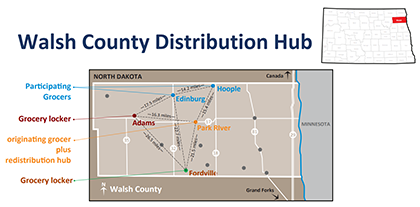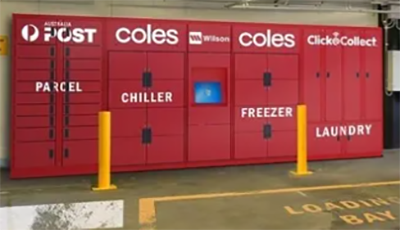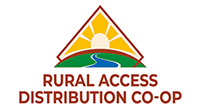Ask A Researcher
September 2021
Rural Communities Will Benefit from a New Cooperative in Walsh County.
Incorporated on April 19, 2021, the Rural Access Distribution Co-op (RAD) is a shared services cooperative providing residents of Walsh County with improved access to healthy food and other important items. This summer, the cooperative launched a food distribution network that unites three small-town grocers; delivers products to two communities without local food access; and aims to improve affordability, variety, and convenience for the people who live there. The following article by Dr. Hodur and Karen Olson provides some insight into this unique endeavor.
Dr. Nancy Hodur is the director of the Center for Social Research at North Dakota State University and has over 25 years of professional experience in applied research, public policy, and outreach education. Karen Olson is a research specialist for the Center for Social Research at North Dakota State University.
A 2018 Gallup poll asked Americans where they’d prefer to live given a choice. The top answer: a rural community. According to the USDA-ERS, about half of North Dakota’s population currently lives in a rural area. And, what is at the heart of small, rural communities? It is often a grocery store. Small-town grocery stores serve as anchor businesses for rural communities, providing access to healthy food, supporting local economies, and serving as a place to meet, shop, and make social connections. Despite the importance of grocery stores to communities, rural grocery stores in North Dakota are struggling. A shrinking customer base, challenges and costs associated with a wholesale supply chain that is gauged toward large purchase volumes, and consumer preferences for a wide variety of products has strained rural grocers’ ability to stay in business. Since 2015, 39 of 137 rural grocery stores in North Dakota communities with a population of 2,100 or less have gone out of business. Of the 98 stores remaining, 16 are community owned or non-profit organizations1 .
Fortunately, there has been a concerted, collaborative effort since 2014 to study and address the challenges that rural grocery stores face in North Dakota 2,3. This hard work has resulted in a committed group of stakeholders (a farmer, three grocers, and a small business owner) who have come together to form a new collaborative in Walsh County, located in the northeastern part of the state – the Rural Access Distribution Cooperative, or the RAD Co-op. Their efforts are being supported by the North Dakota Rural Electric Cooperative Foundation, local economic development organizations, an anonymous donor, the Bush Foundation, local financial supporters, and others simply interested in and committed to maintaining rural grocery stores. Through this support, the Co-op intends to demonstrate how distribution channels can be modified to improve rural food access and to benefit the regional economy.
The RAD Co-op allows for collective wholesale purchasing and will use a Hub and Spoke Distribution approach where a larger store (Jim’s SuperValu in Park River) acts as a redistribution hub for smaller grocery stores in the cities of Hoople and Edinburg. The Co-op will also incorporate an online purchasing platform for customers, as well as two satellite distribution locations in the communities of Adams and Fordville.

Collective Wholesale Purchasing. Collective purchasing increases the total volume ordered, which provides significant savings and more opportunities for variety. Smaller stores are often prohibited from ordering certain products, based on wholesaler requirements. The RAD Co-op allows grocers in Park River, Hoople, and Edinburg to place collective wholesale orders through United Natural Food Inc. (UNFI), the largest publicly traded wholesale distributor of health and specialty food in the United States and Canada. Through a unique arrangement with UNFI, the smaller grocery stores within the Co-op will act as sister stores to the grocery store in Park River, and orders will collectively flow through Park River to UNFI.
When finalized in the coming weeks, wholesale orders will be delivered to Jim’s SuperValu in Park River, which will serve as a redistribution hub, housing frozen and refrigerated items during the sorting and pre-delivery time period. Each week a truck owned and operated by the RAD Co-op will deliver items to Hoople and Edinburg.
All three stores will benefit from lower purchase prices as a result of higher purchase volumes, and lower prices can then be passed on to customers. Along with the savings brings more variety. Collective purchasing will enable the stores in Hoople and Edinburg to potentially expand their offerings as their current wholesale suppliers offer far fewer products, often at higher prices.
Online Purchasing Platform. In addition to lower prices and expanded offerings, the RAD Co-op is adding an online purchasing platform through a collaboration with FTS Solutions, a software company whose mission is to provide access to nutritional food for people everywhere. The demand for online ordering has clearly been accelerated by the COVID-19 pandemic. The ability to offer online shopping will help RAD Co-op members meet the needs of their customers and offer the same type of online shopping offered by larger retailers in urban communities.
The new online platform, currently under construction, will enable customers at all three stores to order online for in-store pickup in Park River, Edinburg, and Hoople. After choosing their desired pickup location, customers are directed to the appropriate store where they can place their online order. Pickup at Edinburg, Hoople, and Park River will then be filled by their local stores.
The online system will be especially beneficial to residents of Adams and Fordville — two communities which are currently without a grocery store, but will each soon have a temperature-controlled grocery locker system in place.
Temperature-Controlled Grocery Locker Systems. Through a collaboration with T4 Solutions, the RAD Co-op will place temperature-controlled grocery locker systems in Adams and in Fordville, in publicly accessible locations. Using the online ordering system, residents can place orders for frozen, refrigerated, and shelf-stable products. The RAD Co-op truck will pick up the orders from Park River and deliver them to the identified locker in Adams and Fordville. Upon delivery, customers will receive either a text or email message informing the customer the product has been delivered and assign them an access code. The customer goes to the lockers, enters the access code, and the assigned locker doors pop open. Once the product is picked up, the redistribution hub receives confirmation that the transaction is complete. The new temperature-controlled lockers have been ordered and the hope is that they will be installed and operational this fall.

What does success look like? The primary objective of this project, based on the consensus of those involved, is to keep rural grocery stores open and to ensure food accessibility in the communities they serve. The goal is not to dramatically increase store profits but to be sustainable and offer more products at better prices. While there are likely going to be a few bumps in the road, this unique collaborative effort has the potential to offer residents of Walsh County a wider variety of products at competitive prices. The ultimate goal is to expand Co-op membership to include other rural grocery stores and to replicate the RAD Co-op model in other parts of the state to ensure residents in rural North Dakota have equitable access to food and to preserve a critical service in rural communities.
For more information on the RAD Co-op, visit ndarec.com/ruralgrocery or find RAD Co-op on Facebook.
References
1North Dakota Rural Grocery Initiative unpublished data
2Challenges of Grocery Stores in Rural North Dakota. May 2020. ND Compass Ask a Researcher. Available at https://www.ndcompass.org/trends/ask-a-researcher/Hodur_Nancy_May_2020.php
3Is food access a concern in rural North Dakota? May 2018. ND Compass Ask a Researcher. Available at https://www.ndcompass.org/trends/ask-a-researcher/Lori_Capouch_05_01_2018.php

